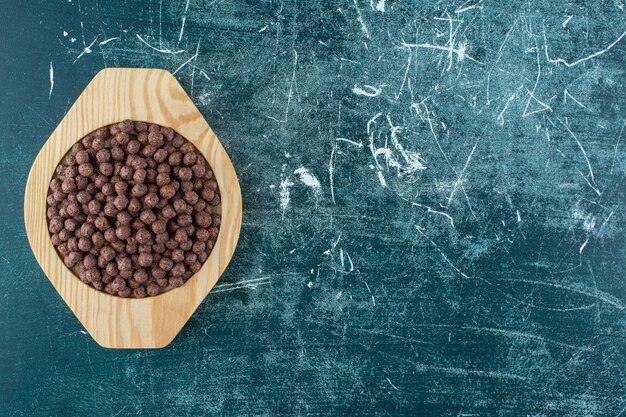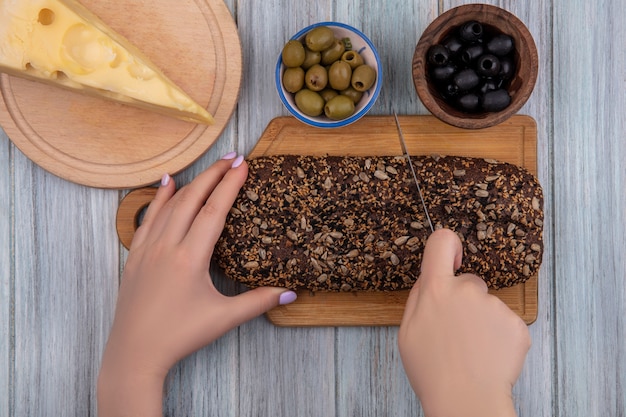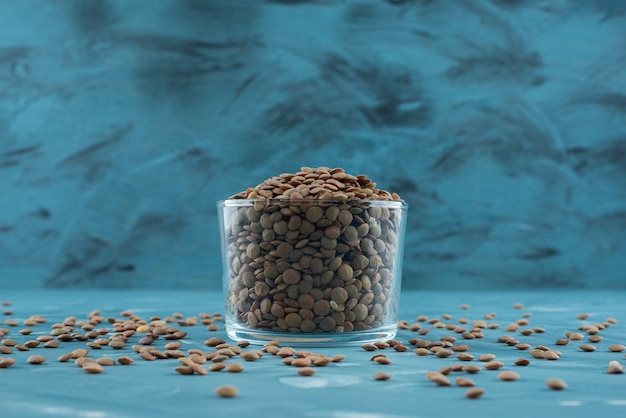Right, so you’re ready to dive into the world of cooking dry black beans. It's a journey that's totally worth the effort, I promise. You're about to discover a whole new level of flavour and satisfaction in your kitchen. But let's be honest, those little, hard beans staring back at you can seem a bit intimidating. Don't worry, though. It’s easier than it looks!
Think of it like this: cooking dry beans is like baking bread. It's a process, a slow transformation, but the reward is utterly delicious. And just like baking, it's all about knowing the right steps and tricks. So, grab your favourite mug (a cuppa is definitely needed!), and let’s dive into the ultimate guide to cooking perfect dry black beans.
(Part 1)
The Basics

First things first, let’s talk about the essentials. The key to successful dry bean cooking lies in understanding a few simple things:
1. Choosing the Right Beans
I always recommend going for black turtle beans because they have a rich, earthy flavour that works perfectly in a variety of dishes. They're the quintessential black bean, really. But if you're feeling adventurous, there are plenty of other delicious black bean varieties to explore:
black-eyed peas: They have a slightly sweet flavour and a lovely creamy texture. They’re great for salads or as a side dish.
Adzuki beans: These are smaller beans with a subtle sweetness and a soft texture. They’re amazing in desserts or as a filling for dumplings.
Mung beans: Perfect for stir-fries and salads, these beans have a mild flavour and a firm texture. They're also a great source of protein.
No matter what type you choose, make sure they’re fresh, dried, and free of any debris or discolouration. You want to start with the best possible beans!
2. Sorting and Cleaning
This might seem like a tedious step, but it’s absolutely crucial. Once you’ve got your beans, give them a good rinse and remove any little stones or bits of debris that may have snuck in. I usually do this in a colander under running water, and then I pick out anything suspicious with my fingers. You don’t want any surprises in your final dish!
3. Soaking the Beans
Soaking your beans is a key step in the cooking process. It helps to shorten the cooking time and improve their texture and digestibility.
There are two main methods for soaking:
- Overnight Soak: This is the most common method. Simply add the beans to a large bowl, cover them with plenty of cold water, and let them sit in the fridge for at least 8 hours, or even overnight. This is my go-to method, as it's incredibly convenient. Just pop them in the fridge before bed and they're ready to go in the morning.
- Quick Soak: If you’re short on time, you can use the quick soak method. In this case, you’ll bring the beans and water to a boil, then turn off the heat and let them soak for an hour. This is a good option if you’re in a hurry, but it doesn’t quite match the results of an overnight soak. You might find the beans need a bit longer to cook.
4. The Importance of Fresh Water
After soaking, drain the beans and replace the water with fresh water. This is essential to prevent any funky flavours that might have developed during soaking. You want those beans to be as fresh and flavourful as possible.
(Part 2)
The Cooking Process

Okay, now for the fun part – actually cooking those beans!
1. The Ratio
The ideal ratio for cooking beans is 1 cup of beans to 3 cups of water. This is a good starting point, but you can adjust it based on your preference and the specific recipe. I usually add a bit more water than that, just to be safe! You don't want the beans to burn or stick to the bottom of the pot.
2. Adding Flavor
This is where you can really get creative. A pinch of salt is always a good idea, and it can be added right at the start of the cooking process. But don’t be afraid to experiment with other flavours:
Onion: Adds a sweet and savory dimension. It’s a classic pairing with beans.
Garlic: Enhances the flavour and aroma. A little garlic goes a long way!
Bay leaves: Adds a subtle earthy flavour. They’re like a secret ingredient that adds depth to your bean dish.
Cumin: Adds a warm, earthy flavour that complements beans beautifully. It's a must-have for Mexican-inspired dishes.
Smoked Paprika: Gives a hint of smoky flavour. Perfect for adding a touch of complexity.
3. Cooking Time
Now, this is where things can get a little tricky, as cooking times vary depending on the type of beans and your preferred texture. In general, dry black beans need to simmer for about 1-2 hours. But it’s always best to check for tenderness using a fork. The beans should be tender but not mushy. If you like them a bit firmer, you can cook them for less time.
4. The Magic of a pressure cooker
Let’s be honest, sometimes you just need a shortcut. That’s where a pressure cooker comes in handy. It can cut down the cooking time significantly, often by half or even more. Just make sure to follow the instructions for your specific pressure cooker.
(Part 3)
Tips and Tricks

Now that you’ve got the basics down, let’s add some extra magic to your bean-cooking game.
1. The Art of Patience
Patience is your best friend when cooking dry beans. Avoid the temptation to rush the process. Resist the urge to stir them too frequently. Just let them gently simmer, and they will reward you with their incredible texture and flavour.
2. The Foam Factor
As the beans cook, you’ll notice some foam forming on the surface. It’s perfectly normal, and it actually helps to lock in the moisture. Just skim off any excess foam with a spoon as needed.
3. Don’t Be Afraid to Add More Water
During the cooking process, it’s normal for the water to evaporate. If you find that the beans are getting too dry, simply add more hot water as needed. You want them to be simmering in a nice, comforting bath of liquid.
4. The Secret to Creamy Beans
If you want your beans to have a luxuriously creamy texture, try adding a small amount of vegetable broth or chicken broth towards the end of the cooking process. It will add a touch of richness and depth of flavour.
5. The Ultimate Finishing Touch
Once the beans are cooked to perfection, remove them from the heat and let them sit for 10-15 minutes. This will help them absorb all the flavours and become even more tender.
(Part 4)
Delicious bean recipes
Now, let’s talk about the real reason we’re all here: the delicious recipes! Here are a few of my favourites:
1. Classic black bean salsa
This is a refreshing and flavourful salsa that’s perfect for a summer barbecue or as a topping for tacos or nachos.
Ingredients:
1 cup cooked black beans
1/2 red onion, finely chopped
1/2 cup chopped fresh cilantro
1/4 cup chopped fresh tomato
1/4 cup lime juice
1 tablespoon olive oil
1 teaspoon salt
1/2 teaspoon black pepper
Instructions:
1. Combine all ingredients in a bowl and mix well.
2. Chill for at least 30 minutes before serving. Let those flavours mingle!
2. Creamy black bean soup
This is a hearty and comforting soup that’s perfect for a chilly evening.
Ingredients:
1 cup cooked black beans
1 onion, chopped
2 cloves garlic, minced
1 tablespoon olive oil
4 cups vegetable broth
1/2 teaspoon cumin
1/4 teaspoon chili powder
Salt and pepper to taste
Instructions:
1. In a large pot, sauté the onion and garlic in olive oil until softened.
2. Add the vegetable broth, cumin, chili powder, salt, and pepper. Bring to a boil, then reduce heat and simmer for 15 minutes.
3. Add the cooked black beans and simmer for another 5 minutes.
4. Use an immersion blender to puree the soup until smooth, or transfer it to a regular blender and puree in batches.
3. black bean burgers
These are a healthy and satisfying alternative to beef burgers.
Ingredients:
1 cup cooked black beans
1/2 cup rolled oats
1/4 cup chopped onion
1/4 cup chopped fresh cilantro
1 egg
1 tablespoon olive oil
1 teaspoon cumin
1/2 teaspoon chili powder
Salt and pepper to taste
Instructions:
1. In a large bowl, combine all ingredients and mix well.
2. Form the mixture into patties.
3. Heat olive oil in a pan over medium heat and cook the patties for 5-7 minutes per side, or until golden brown and cooked through.
(Part 5)
Storing and Freezing
Now that you’ve cooked a big batch of delicious beans, you need to know how to store them properly.
1. Refrigerator Storage
Cooked beans will last in the refrigerator for 3-4 days in an airtight container. They're best enjoyed within that time frame.
2. Freezing Beans
To freeze beans, place them in an airtight container or freezer-safe bag. They’ll stay fresh for up to 3 months in the freezer. This is a great way to have beans on hand for later.
3. Thawed Beans
When ready to use frozen beans, simply thaw them in the refrigerator overnight. No need to defrost them before cooking.
(Part 6)
The nutritional powerhouse
Let’s not forget that black beans are not just delicious; they are also packed with nutrition!
1. A Protein Powerhouse
Black beans are an excellent source of plant-based protein, which is essential for muscle growth, repair, and overall health.
2. High in Fiber
They’re also loaded with fiber, which helps to regulate digestion, lower cholesterol, and keep you feeling full.
3. A Treasure Trove of Vitamins and Minerals
Black beans are a good source of various vitamins and minerals, including iron, potassium, folate, and magnesium.
(Part 7)
Common Mistakes to Avoid
We all make mistakes, and that’s okay! But there are a few common mistakes to avoid when cooking dry black beans:
1. Not Soaking the Beans
Soaking is essential for tenderness, cooking time, and digestibility. Don’t skip this step!
2. Adding Salt Too Early
Adding salt too early can make the beans tough. Wait until the beans have cooked for about 30 minutes before adding salt.
3. Overcrowding the Pot
Don’t cram the beans into the pot. Give them enough space to cook evenly. This will help them cook more quickly and evenly.
4. Not Checking for Tenderness
Make sure to check the beans for tenderness as they cook. They should be tender but not mushy. If you find they are still too hard, you can always add more water and continue simmering.
(Part 8)
FAQs
Here are some frequently asked questions about cooking dry black beans:
1. Why Are My Beans Not Cooking Tender?
If your beans are not cooking tender, it might be because they’re old or because you haven’t soaked them properly. Also, check to make sure that you’re using enough water and that the beans are simmering gently. You don’t want them to boil too vigorously.
2. How Can I Make My Beans More Creamy?
As mentioned before, adding a little vegetable broth or chicken broth towards the end of the cooking process can give your beans a luxuriously creamy texture.
3. Can I Use canned beans Instead?
Of course! If you don’t have time to cook dry beans, canned beans are a great alternative. Just drain and rinse them before using.
4. What Can I Do with Leftover Beans?
Leftover beans are a wonderful ingredient for countless recipes! You can add them to salads, soups, stews, burritos, or even make a batch of delicious bean dip. They’re super versatile.
5. How Do I Know When My Beans Are Done?
The best way to tell if your beans are cooked through is to use a fork. They should be tender and easily mashed with a fork. If you have any doubts, you can always cook them for a bit longer.
(Part 9)
Conclusion
There you have it, folks! The ultimate guide to cooking perfect dry black beans. With a little patience, practice, and some helpful tips, you’ll be whipping up delicious bean dishes in no time. Remember, cooking dry beans is an adventure, a journey of transformation. Embrace the process, enjoy the flavour, and let those little beans bring a world of culinary joy to your kitchen!
Everyone is watching

Corn on the Cob: The Ultimate Guide to Perfectly Cooked Ears
Healthy MealsAh, corn on the cob. Just the name evokes images of sunny days, barbecues, and that sweet, juicy flavour that ...

Scallops: The Ultimate Guide to Perfect Cooking
Healthy MealsAh, scallops. Those delicate, sweet, and utterly delicious morsels of the sea. They hold a special place in my...

Spaghetti Squash: The Ultimate Guide to Cooking and Serving
Healthy MealsRemember that time you saw spaghetti squash at the supermarket, looking all bumpy and strange, and thought, "W...

Salmon Cooking Times: Perfect Guide for Every Recipe
Healthy MealsLet me tell you, cooking salmon is an art form. It's all about getting that perfect balance: juicy and tender,...

Ham Cooking Time: How Long to Bake, Smoke, or Boil a Delicious Ham
Healthy MealsAh, ham. It's a classic, isn't it? A real crowd-pleaser, especially around holidays. And when done right, it'...
